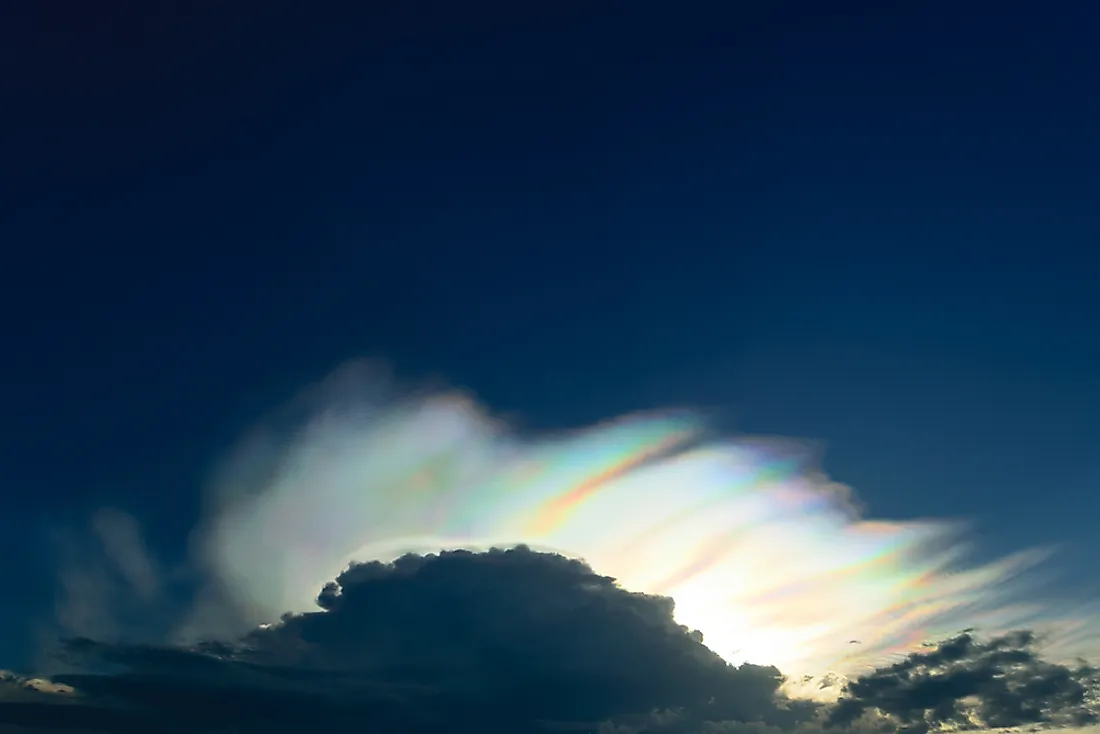What Is A Fire Rainbow?

A fire rainbow refers to the circumhorizontal arcs which are neither a type of rainbow nor flame. A fire rainbow is as a result of light being refracted as it passes from the moon or the sun over the ice crystals within the atmosphere, especially with cirrostratus or cirrus clouds. A full fire rainbow is characterised by a band of spectrum colours, with the red colour formed in the outermost ring. Such band of spectrum colours run in a parallel direction to the horizon and are found under the moon or the sun. Fire rainbow is also known as the lower symmetric 45° plate arc or the circumhorizon arc.
Formation of Fire Rainbows
The formation of the fire rainbow entails the rays of sunlight passing through the ice crystals in the clouds in a vertical manner. The ice crystals are in a horizontal orientation, with the hexagonal flat face; the thickness of the ice does not influence its formation. In some instances, ice crystals formed in a parry orientation manner may lead to the formation of the fire rainbow, though this is a rare phenomenon. An ideal organization of the ice crystals which lead to separation of the spectral colours is the exit faces and ray entrance being inclined at an angle of 90° to each other. In most cases, rays from the sun pass through the ice crystals in an angular inclination; hence there is no complete separation of the spectral colours in most cases.
How Often Do Fire Rainbows Occur?
The frequency of the formation of the fire rainbow is influenced by some factors. One of the main factors is the region and latitudinal location. For example, in the United States, fire rainbows are mostly observed during the summer period, whereas Europe rarely experiences this phenomenon. Regions beyond 55° North and South of the equator rarely experience this phenomenon due to the conditions required for the formation of the circumhorizon arc. The elevation of the sun’s rays in such regions is less than 58° in most periods of the year. Thus, the rays do not give proper conditions to form the fire rainbow.
Artificial Fire Rainbows
The splitting of light has been experimentally done over many years by using the water glass experiment. This experiment entails the modification of water in a glass to split light into the various circumhorizontal arc lights. When light is illuminated and passed through a very steep angle into a cylindrical glass almost full of water, the light would be refracted into the water. For this to occur, the glass should be placed at the end of the table towards the wall. When the rays of light strike the water, they are refracted a second time hence projecting a hyperbola on the wall. Consequently, an artificial fire rainbow is formed which has the same characteristics as the natural one.
Significance of Fire Rainbows
As indicated above, the fire rainbow phenomenon has led to scientific research such as the use of glass prism to split light. Therefore, this has boosted study in light and creation of artificial fire rainbow. Furthermore, this phenomenon is fascinating; hence it attracts interest from people who cannot experience it in their regions. Consequently, it has led to people living in high latitude regions visiting the tropics regions especially during the summer hence, becomes a sort of tourist attraction.











